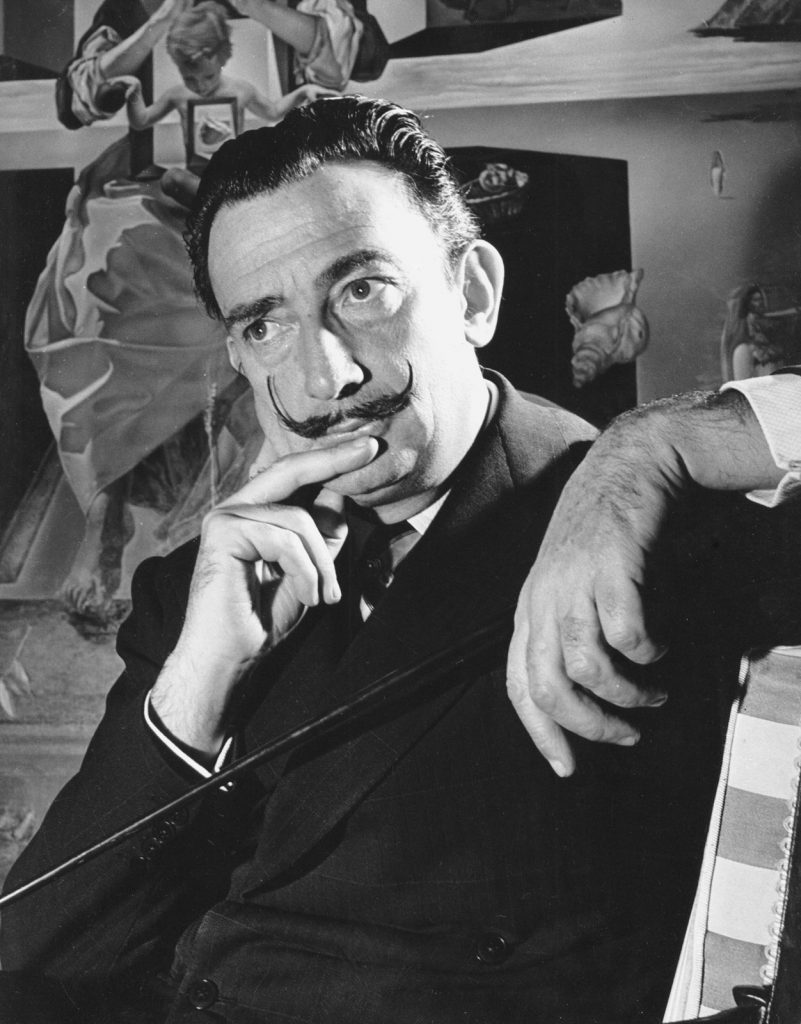Every day, I kill the image of my poor brother…I assassinate him regularly, for the ‘Divine Dali’ cannot have anything in common with this former terrestrial being.
Salvador Dali
Salvador Dali was born in 1904 in Figueras, Spain. His elder brother, Salvador Galo Dali died when he was twenty-one months and twenty days old, exactly nine months and ten days before the birth of Salvador Dali, the painter. His status of replacement child seems well established and we find recurrent themes relating to being a replacement child in the life and work of the artist.

After the death of her first child, Dali’s mother was distraught; totally beside herself. Everything about that son delighted her and his loss was a terrible shock from which she never recovered. Dali’s birth relieved his parents’ despair, but the painter was always aware of their anguish. He felt his brother’s presence on a very deep level, especially since his parents chose to view their second son as the reincarnation of his deceased brother. Dali remarked that his “despairing parents…committed the crime of giving the same first name to the new Dali that their dead son had borne.” And the presence of his lost brother stayed with Dali forever.
Dali’s dead brother was his “ghostly double” and as such, created tremendous conflict and stress for the painter, resulting in a kind of splitting of the personality. Dali essentially lived the life of two people—himself and his deceased brother. Having one foot in the grave and one foot on the Earth, Dali developed a fascination with the theme of “decay and putrefaction,” and images of these found their way into his art.
After his mother’s death in 1921, Dali struggled to find and establish an identity as an adult on his own—apart from his family and away from his father, who had remarried his late wife’s sister. In 1922 Dali went to study in Madrid at the Academia de San Fernando.
Aside from a personality “shared” with his deceased brother, Dali thought of himself as a part of one (larger) personality called the four Salvadors which included himself, his father, his deceased brother, and Jesus Christ (Salvador in Spanish).
The year 1929 was a turning point for Dali. He joined the French Surrealists and he met Gala (Elena Ivanovna Diakonova) who became his muse and the love of his life. But his father disapproved of the relationship and a thirty year estrangement between father and son followed. Eventually, they reconciled.
The deceased Salvador had the middle name, Galo, most probably named after Dali’s grandfather, Gal. The artist said, “I name my wife: Gala, Galusha, Gradiva…” In essence, by transmuting his brother’s name into the feminine form, Gala, Dali was able to “free” himself. Gala became “Gala the Savior, or Gala the Rescuer” (in Spanish: Gala Salvadora). And Surrealism “liberated” Dali from the parental power that inhibited him, helping him to creatively channel his impulses.
Dali identified himself with the Dioscuri (Dioskouroi), the Divine Twins—Castor and Pollux (Polydeuces). As the mythic tale goes, Zeus transforms himself into a swan and mates with Leda. The union produces two eggs. In one telling of the myth, one egg produces the twins, Castor and Pollux, and from the second emerge Clytemnestra and Helen of Troy. (Another version of the myth pairs Castor with Clytemnestra and Pollux with Helen.)
Dali equated himself with Pollux, the immortal son of Zeus, and Gala with Helen. He identified his deceased brother with Castor, a mortal, and in one version of the myth, the son of Leda and her husband, King Tyndareus. In the “twins” he was finally able to assume his own identity, no longer overshadowed by the memory of this dead brother. Citing Darwin,
Dali noted that his brother was too weak to survive, and this made it possible for him, Dali, his successor, to thrive.
Although wildly eccentric, Dali never succumbed to madness. “The only difference there is between a mad man and me, is that I’m not mad!” After a fascinating, colorful life and a prolific career, he died on January 23, 1989.
Ultimately, one can say that being a replacement child was a “positive” for Dali. His experiences shaped his art. As a result, he became his own greatest creation. His genius finds expression in the way he invented himself—an over-the-top, eccentric, flamboyant, provocative work-in-progress.
This month’s profile is excerpted with permission from Replacement Children: The Unconscious Script, by Rita Battat and Dr. Abigail Brenner.